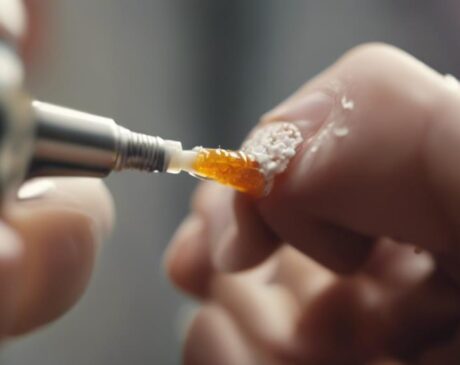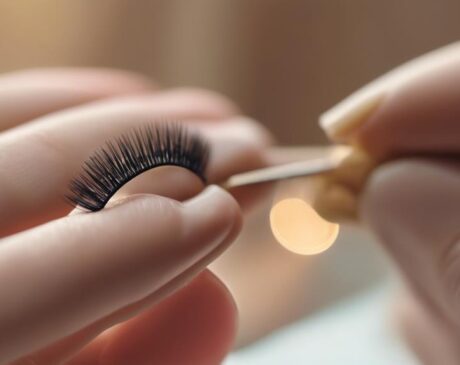Is Vaseline Good for Your Nails?
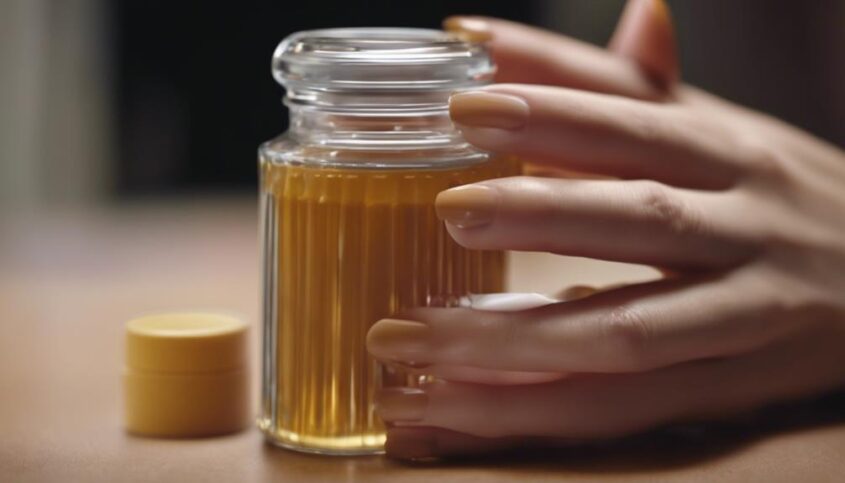
Vaseline is good for nails as it moisturizes and strengthens them with a protective barrier. This can enhance overall nail health and appearance. Some find it beneficial to their nail care routine.
Key Takeaways
- Vaseline locks in moisture, preventing dryness and brittleness.
- It strengthens nails with a protective barrier.
- Vaseline creates a healthier environment for nail growth.
- It moisturizes nails by retaining natural oils.
- Use sparingly to avoid potential drawbacks on nail health.
Benefits of Vaseline for Nails
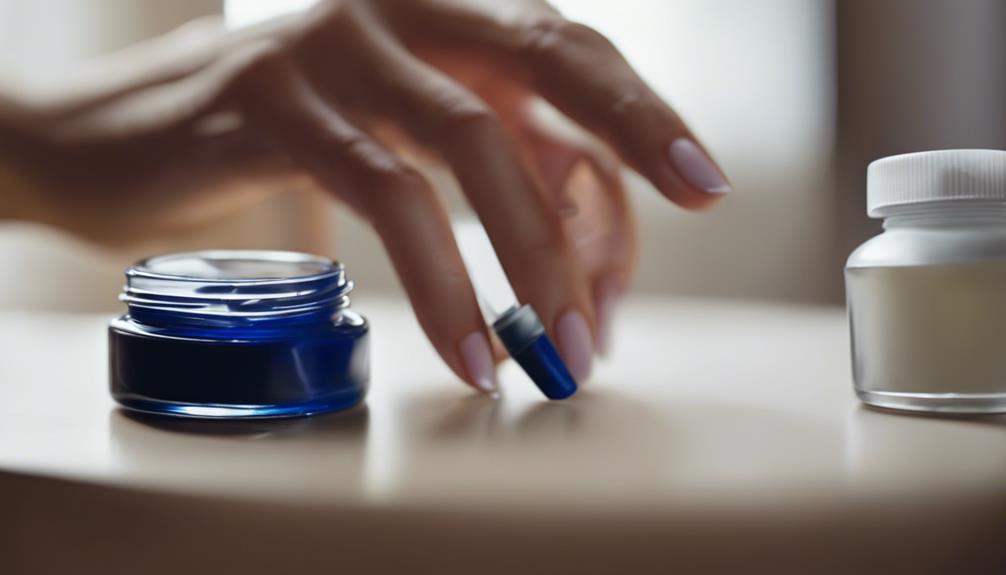
Vaseline, a commonly used petroleum jelly, offers several benefits for nails when used correctly and consistently. Beyond its traditional uses, Vaseline can serve as a versatile nail care product due to its moisturizing properties. One of the primary advantages of using Vaseline on nails is its ability to lock in moisture, preventing them from becoming dry and brittle. This is especially beneficial for individuals who frequently expose their nails to harsh chemicals or environmental factors that can lead to damage.
Moreover, Vaseline can help strengthen nails by providing a protective barrier that shields them from external stressors. By applying Vaseline regularly, nails can become more resilient and less prone to breakage. Additionally, the occlusive nature of Vaseline helps to seal in moisture, promoting nail health and overall appearance.
Innovative nail care routines often include unconventional yet effective methods, and incorporating Vaseline into your regimen can lead to healthier and more beautiful nails. By leveraging the unique properties of Vaseline, individuals can nurture their nails and unlock their full potential.
How Vaseline Moisturizes Nails
Moisturizing nails effectively requires a product with hydrating properties that can penetrate deeply to nourish and strengthen the nail bed. Vaseline, a popular household product, can be a beneficial option for moisturizing nails. Vaseline works by creating a protective barrier on the nail surface, locking in moisture and preventing dehydration. Its occlusive nature helps to retain the natural oils present in the nails, promoting hydration and preventing brittleness. This barrier also shields the nails from external factors like harsh chemicals and frequent washing, which can strip the nails of their natural oils.
Moreover, Vaseline contains petroleum jelly, which has emollient properties that soften the nails and cuticles. By keeping the nails well-moisturized, Vaseline contributes to the overall health and appearance of the nails. Regular application of Vaseline can help prevent cracking, splitting, and peeling, leading to stronger, more resilient nails. While Vaseline may not strengthen the nails directly, its moisturizing effects can create a healthier environment for nail growth and maintenance.
Vaseline Vs Nail Strengthening Products
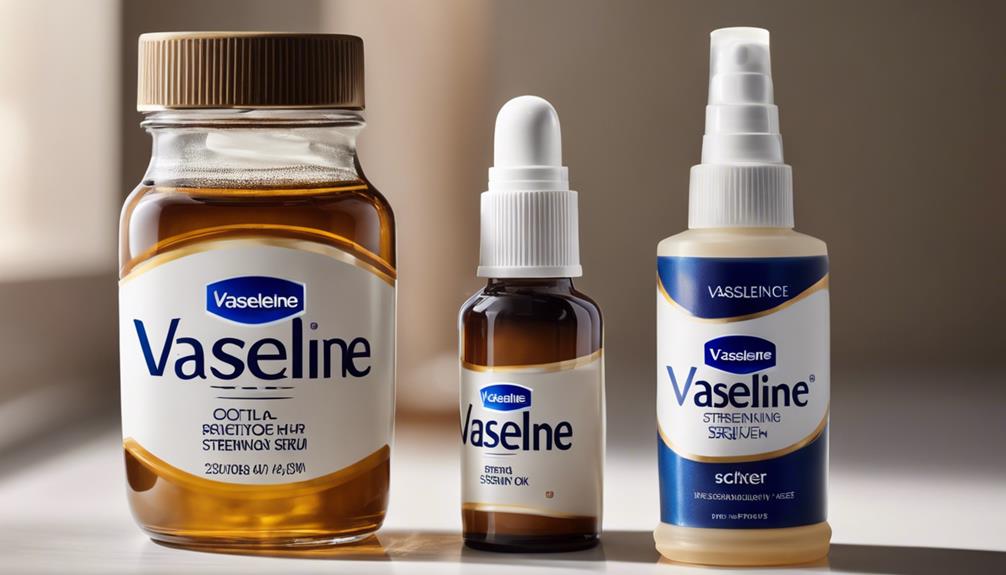
When comparing the use of Vaseline to nail strengthening products, it is important to consider their respective effects on nail health and resilience. Vaseline, a petroleum jelly product, primarily functions as a moisturizer, forming a protective barrier to lock in moisture and prevent nails from becoming brittle and dry. While Vaseline can help improve the overall condition of the nails by keeping them hydrated, it may not provide the specific nutrients needed to strengthen the nails from within.
On the other hand, nail strengthening products are specifically formulated to target the structural integrity of the nails. These products often contain ingredients such as keratin, biotin, and various vitamins that work to reinforce the nails, making them less prone to breakage and splitting. Unlike Vaseline, nail strengthening products are designed to penetrate the nail bed and promote growth and resilience from the inside out.
Tips for Using Vaseline on Nails
When it comes to using Vaseline on nails, understanding the benefits of nail hydration and effective cuticle care tips is crucial. Incorporating Vaseline into your nail care routine can help keep your nails moisturized and healthy. By following these simple tips, you can make the most of Vaseline's potential for nail care.
Nail Hydration Benefits
For optimal nail hydration benefits, incorporating Vaseline into your nail care routine can be highly beneficial. Vaseline acts as an occlusive barrier, sealing in moisture and preventing water loss from the nails, thus improving their hydration levels. Here are some tips for using Vaseline on your nails effectively:
| Tips for Using Vaseline on Nails | ||||
|---|---|---|---|---|
| 1. Apply a thin layer of Vaseline to your nails before bed and cover them with gloves or socks to enhance absorption. | 2. Massage Vaseline into your nails and cuticles to promote hydration and improve nail health. | 3. Use Vaseline as a base coat before applying nail polish to protect your nails from drying out. | 4. Reapply Vaseline regularly, especially after washing your hands, to maintain nail moisture. | 5. Consider mixing Vaseline with essential oils for added nourishment and fragrance. |
Cuticle Care Tips
Enhancing the health and appearance of your cuticles can be achieved by incorporating Vaseline into your nail care routine. To effectively care for your cuticles using Vaseline, start by applying a small amount of Vaseline to the base of each nail and gently massaging it in. This will help moisturize the cuticles, keeping them soft and preventing them from drying out. For an intensive treatment, apply Vaseline generously to the cuticles before bedtime and cover your hands with gloves overnight. This will allow the Vaseline to deeply nourish the cuticles while you sleep, promoting healthier and more hydrated nails. Regularly incorporating Vaseline into your nail care regimen can lead to visibly improved cuticle health and overall nail appearance.
Common Misconceptions About Vaseline
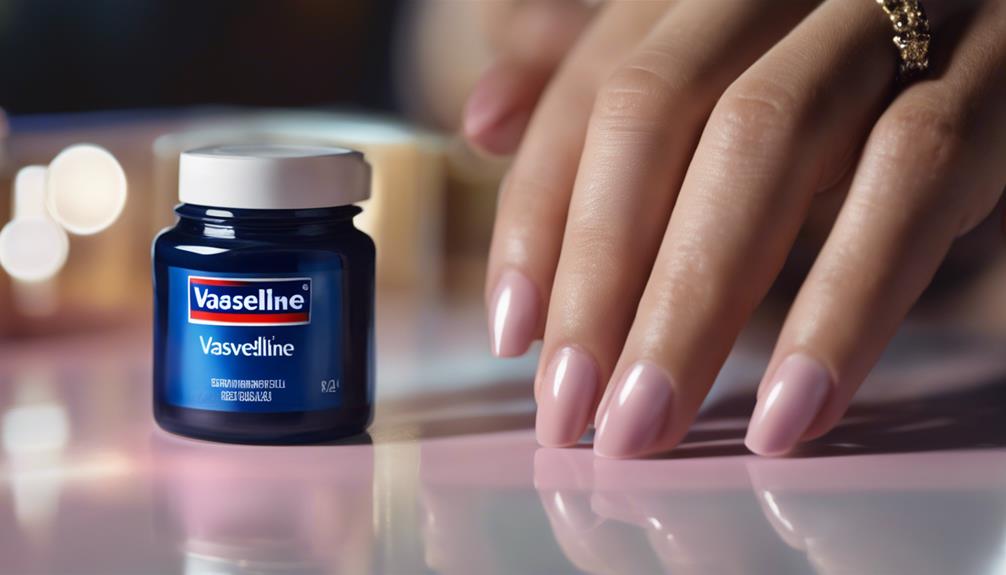
One prevalent misconception regarding Vaseline is its pore-clogging properties. Contrary to this belief, Vaseline is non-comedogenic, meaning it does not block pores. This myth likely stems from its thick consistency, leading many to assume it would suffocate the skin. However, Vaseline is actually a purified mixture of waxes and mineral oils, which form a protective barrier on the skin rather than penetrating it. This barrier helps to prevent moisture loss and protect the skin from external irritants, making it a useful tool in nail care.
Another common misunderstanding is that Vaseline can weaken nails. In reality, when applied correctly to the cuticles and nails, Vaseline can actually help strengthen and hydrate them. By sealing in moisture, Vaseline can prevent nails from becoming brittle and prone to breakage. Its occlusive properties lock in hydration, promoting healthier, more resilient nails. Therefore, incorporating Vaseline into your nail care routine can be a beneficial and innovative way to maintain strong and beautiful nails.
Potential Drawbacks of Vaseline on Nails
When considering the use of Vaseline on nails, it is important to acknowledge potential drawbacks. Some concerns include the possibility of nail weakening over time and the potential for issues related to nail breathing. These drawbacks should be taken into account when deciding whether to incorporate Vaseline into your nail care routine.
Nail Weakening Concerns
The prolonged use of Vaseline on nails has raised concerns regarding the potential weakening of the nail structure. While Vaseline can help lock in moisture and provide a protective barrier, its occlusive nature may prevent nails from absorbing essential nutrients and oxygen, leading to potential brittleness and weakening over time. This occlusive barrier could hinder the nail's natural process of exchanging gases with the environment, potentially affecting its overall health and strength. To maintain nail integrity, it is advisable to use Vaseline sparingly and ensure that nails receive adequate exposure to oxygen and nutrients. Further research into the long-term effects of Vaseline on nails is warranted to fully understand its impact on nail health and strength.
Breathing Issues for Nails
While Vaseline can effectively lock in moisture and create a protective barrier for nails, its occlusive nature may pose concerns regarding potential breathing issues that could impact nail health over time. It is essential to consider the drawbacks of using Vaseline on nails, especially in terms of their ability to breathe and maintain optimal health. Here are some potential breathing issues that may arise from using Vaseline on nails:
- Reduced oxygen flow: Vaseline's thick consistency may limit the amount of oxygen that reaches the nail bed.
- Risk of moisture accumulation: Excessive moisture trapped by Vaseline can lead to fungal infections or weakening of the nails.
- Potential for yellowing: Lack of air circulation may cause nails to become discolored or develop a yellow tint.
- Difficulty in nail growth: Hindered breathing can impede the natural growth and strength of nails.
Alternatives to Vaseline for Nail Care
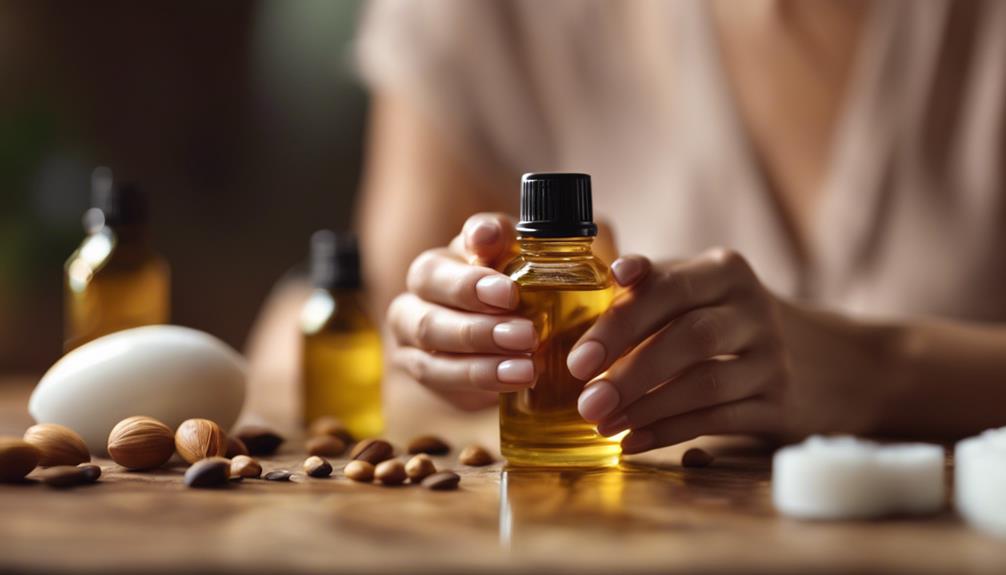
For individuals seeking alternatives to Vaseline for nail care, consider exploring the benefits of using natural oils such as coconut or argan oil. These oils provide a nourishing and moisturizing alternative to Vaseline, offering unique properties that can promote healthy nails and cuticles.
Coconut oil, known for its hydrating and antibacterial properties, can help strengthen nails and prevent breakage. Its ability to penetrate the nail bed may also aid in improving overall nail health. Argan oil, rich in antioxidants and vitamin E, is another excellent option. It can provide hydration and protection, promoting flexibility and shine in nails.
Additionally, almond oil, jojoba oil, or even olive oil can be viable alternatives to Vaseline for nail care. Each of these natural oils brings its own set of benefits, from strengthening nails to moisturizing cuticles. By incorporating these oils into your nail care routine, you can nourish your nails effectively and maintain their health and appearance without the use of Vaseline.
Frequently Asked Questions
Can Vaseline Be Used as a Nail Polish Remover?
Vaseline can be used as a nail polish remover by applying a thin layer on nails, leaving it for a few minutes, and then wiping it off with a cotton pad. It can help dissolve the polish effectively.
Will Vaseline Cause Nail Polish to Chip or Peel Off?
Applying Vaseline to nails can create a protective barrier, potentially reducing chipping or peeling of nail polish. Its occlusive properties may help maintain polish integrity. Experiment cautiously to determine effectiveness for individual nail health and longevity.
Is It Safe to Use Vaseline on Acrylic or Gel Nails?
When considering the safety of using Vaseline on acrylic or gel nails, it is crucial to understand how the product may interact with the materials. Proper research and consultation with nail care professionals can provide valuable insights into best practices.
Can Vaseline Help With Nail Fungus or Infections?
In the realm of nail care, Vaseline's potential role in combatting nail fungus or infections is a subject of interest. While anecdotal evidence suggests its barrier properties may offer some protection, further research is warranted for conclusive recommendations.
Does Vaseline Work for Strengthening Weak or Brittle Nails?
Vaseline can provide a protective barrier to help retain moisture in nails, potentially aiding in strengthening weak or brittle nails. Regular application may offer benefits, but individual results may vary. Consistent use is recommended for optimal outcomes.

